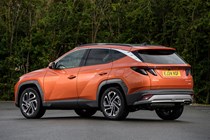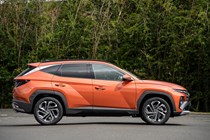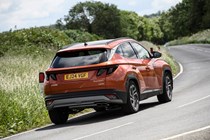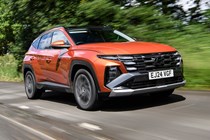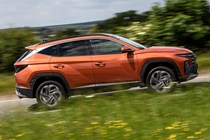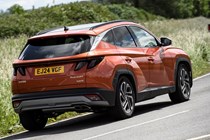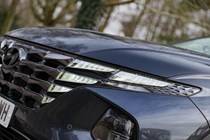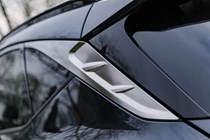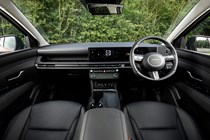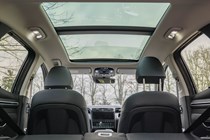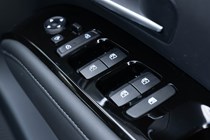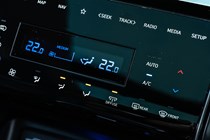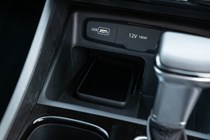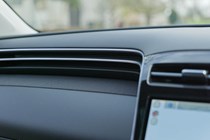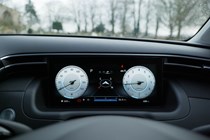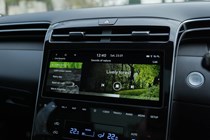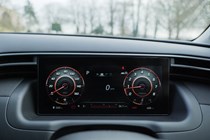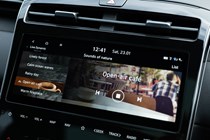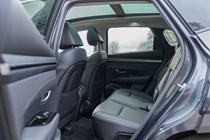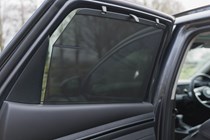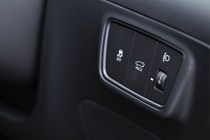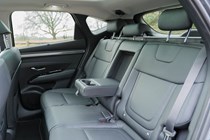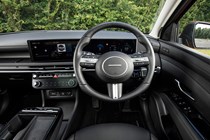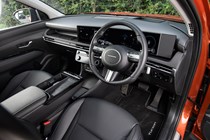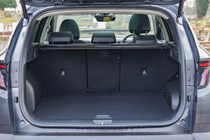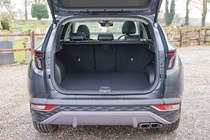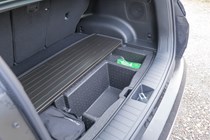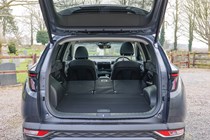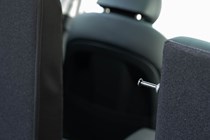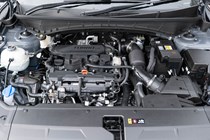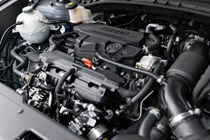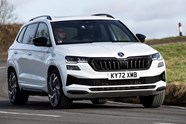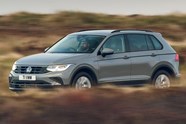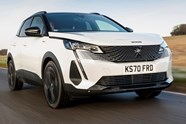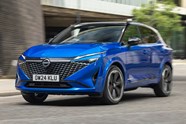
Hyundai Tucson review
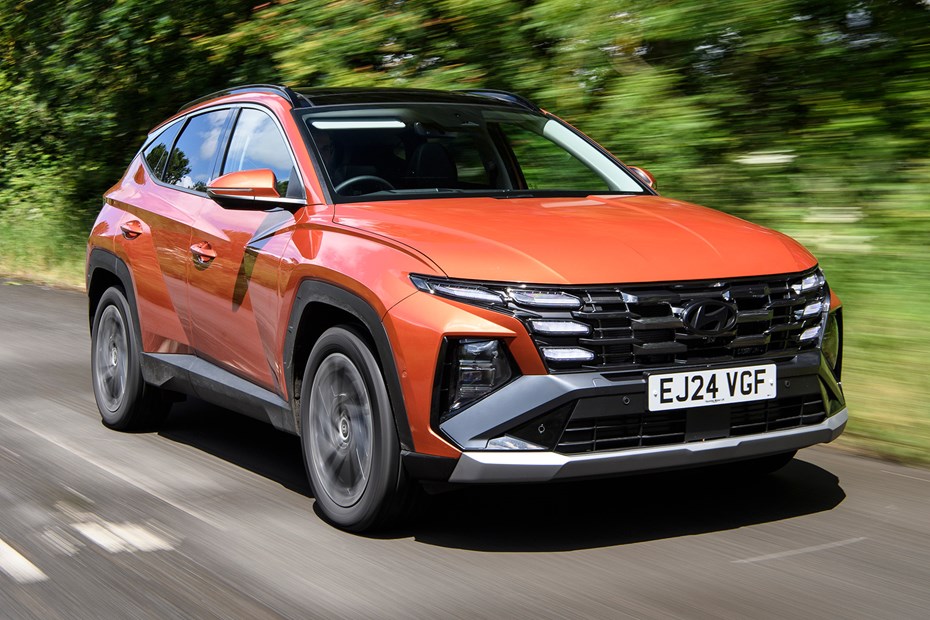
At a glance
| Price new | £31,990 - £45,875 |
|---|---|
| Used prices | £13,142 - £34,930 |
| Road tax cost | £180 - £600 |
| Insurance group | 12 - 23 |
Get an insurance quote with

|
|
| Fuel economy | 39 - 50.4 mpg |
| Miles per pound | 5.7 - 7.4 |
| Number of doors | 5 |
| View full specs for a specific version | |
Available fuel types
Petrol
Hybrid
Pros & cons
- Comfortable and roomy interior
- User-friendly infotainment system
- Range of hybrid engine options
- No diesel for long-distance drivers
- Not particularly fun to drive
- Unimpressive MPG in Hybrid model
Hyundai Tucson SUV rivals
Overview
The Hyundai Tucson family hybrid SUV has always done well for its manufacturer. Flamboyance may be absent in its DNA, but by getting the most fundamental elements of what makes a good family SUV right, the Tucson has regularly frequented best-seller lists. As far as affordable hybrid SUVs go, with striking looks and a pocket-friendly price tag, the Tucson makes a great case for itself as one of the class leaders.
It’s a Nissan Qashqai rival powered by a range of petrol or hybrid models that majors on efficiency and refinement. There are three flavours of hybrid to choose from: mild 48-volt, full self-charging hybrid or plug-in. Add in Hyundai’s five-year warranty and reputation for reliabilty, and it’s no wonder that the Tucson is such a common sight these days.
It needs to stand out to be competitive in the family SUV market. We’ve picked the Peugeot 3008, Volkswagen Tiguan and Ford Kuga here as its principal rivals, but there are many others to choose from, not least the Kia Sportage. Other Volkswagen Group models include the SEAT Ateca and Skoda Karoq, while the Citroen C5 Aircross and Vauxhall Grandland are closely related to the 3008.
The latests Tucson interior features a wide dashboard that is dominated by two large screens – one for infotainment, the other for instrumentation. Both are fully customisable and connected, with live parking and traffic information available as part of the new sat-nav setup. Contrasting highlights across the cabin smarten things up, and there’s a touch-sensitive climate control panel.
There are plenty of trims to choose from, with the Connect SE kicking off the range. It features with 17-inch alloy wheels, Apple CarPlay, Android Auto, climate control, a rear-view camera, and a 10.3-inch digital instrument screen with 10.3-inch centre touchscreen. Above that are the Premium, Connect, N Line, N Line S and range-topping Ultimate, which gets you 19-inch alloys, full leather interior, panoramic roof and electric tailgate. All are well equipped for the money.
As for the engine range, it’s extensive but exclusively petrol-powered, which is becoming increasingly common in this market sector as the industry moves away from diesel. The entry-level 1.6-litre TGDi is as basic as they come, but the TGDi MHD adds mild hybrid assistance, while the Hybrid adds more battery assistance and ups the power to 230hp. The top Tucson is the Plug-in Hybrid model, which boosts power to 265hp and gains four-wheel drive.
So, you can’t accuse Hyundai for not offering enough choice. Click through the next few pages to read everything you need to know about the Tucson, including its practicality, how much it costs to run, what it’s like to drive – and whether we recommend buying one. How did we put the Tucson through its paces? Read our how we test cars page to find out everything you need to know.




